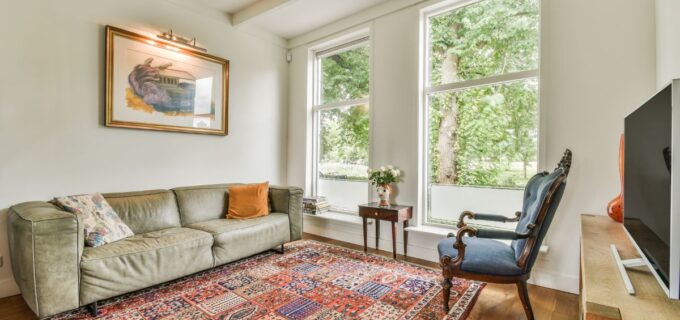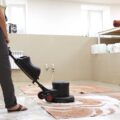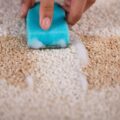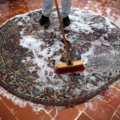
The Rich Legacy of Persian Rugs: A Confluence of Art, History, and Craftsmanship
Embarking on a journey through the art and history of Persian rugs unveils a rich legacy woven over centuries. These rugs, beyond their decorative allure, represent a profound narrative of tradition and skill, deeply embedded in the fabric of the ancient Persian Empire. Admired globally for their intricate designs, vivid colors, and exceptional craftsmanship, Persian rugs are not merely furnishings but cultural treasures, embodying the stories and artistry of the weavers behind them. The value of a Persian rug transcends its physical beauty, encompassing its cultural and historical significance, making it an esteemed asset for collectors and homeowners alike.
Understanding the intrinsic worth and the requisite care for these rugs is fundamental to their appreciation. Handcrafted, often over months or years, these rugs demand a blend of dedication and skill, reflected in both their monetary and historical value. Thus, safeguarding their beauty and legacy through proper care is essential.
In the realm of Persian rug making, three primary fibers contribute to their distinctiveness: silk, cotton, and wool. Silk, known for its luster and fine texture, grants a luxurious feel to the rugs, enabling the creation of highly detailed designs due to its strength and fine threads. However, this delicacy necessitates careful handling, often relegating silk rugs to less trafficked or decorative spaces. Cotton, robust and durable, often forms the backbone of these rugs, providing a sturdy base that helps maintain shape and structure over time. Meanwhile, wool, the most prevalent material, is celebrated for its durability, warmth, and natural oils that impart a subtle sheen. It is the fiber of choice for rugs in high-traffic areas due to its resilience and comforting texture.
Each fiber type, with its unique characteristics, dictates specific care requirements. From the tender care needed for silk to the enduring nature of wool, recognizing and responding to these needs is crucial for the preservation and longevity of these exquisite pieces. As we delve further, we explore the nuances of each fiber, equipping you with the knowledge to ensure your Persian rug remains a vibrant and cherished element of your home for generations.
From Silk to Wool: Understanding the Core Fibers of Persian Rugs

In the world of Persian rugs, the choice of fiber is not just a matter of material but a reflection of artistry, culture, and tradition. Each fiber – silk, cotton, and wool – brings its unique essence, impacting the rug’s beauty, feel, and durability.
Silk: The Epitome of Elegance and Intricacy
Silk, revered for its elegance and sheen, is the hallmark of luxury in Persian rugs. It allows for an extraordinary level of detail in weaving, resulting in designs that are rich in intricacy and vibrancy. Silk fibers lend a distinctive luster to rugs, making them prized possessions and often the centerpiece of a room. However, this beauty comes with a need for delicate care. Silk rugs are susceptible to damage from excessive foot traffic and direct sunlight. Their maintenance requires a gentle approach, usually involving professional cleaning and careful placement in the home to preserve their exquisite beauty.
Cotton: The Backbone of Durability and Stability
Cotton, often used in the foundation of Persian rugs, is valued for its strength and durability. It provides a stable base that helps the rug maintain its shape and structural integrity over time. Cotton fibers, being less delicate than silk, are more forgiving and easier to maintain. They can withstand regular cleaning and are less prone to damage from everyday use. This makes cotton-based Persian rugs a practical choice for areas with moderate foot traffic, blending beauty with functionality.
Wool: The Blend of Resilience and Comfort
Wool is perhaps the most used fiber in Persian rugs, renowned for its resilience and warmth. Woolen rugs are known for their durability, making them suitable for high-traffic areas. They bring a sense of warmth and comfort to any space, with their plush texture and natural insulation properties. However, wool rugs are not without their challenges. They can be prone to issues such as pilling and are susceptible to moth damage if not properly maintained. Regular vacuuming, proper storage, and occasional professional cleaning can help in preserving the natural beauty and longevity of wool rugs.
In essence, understanding these fibers is key to appreciating and caring for Persian rugs. Each fiber type, with its distinct characteristics, contributes to the rug’s overall appeal and requires specific care considerations. As we explore further, we will delve into the unique challenges and specialized care techniques for each of these fibers, ensuring your Persian rug retains its beauty and value for years to come.
Expert Care Tips: Overcoming Challenges with Different Rug Fibers

Caring for Persian rugs involves a nuanced understanding of each fiber type and its specific challenges. Silk, cotton, and wool each bring their own set of care considerations, from stain removal to damage prevention. Let’s explore these challenges and the specialized care needed to keep these exquisite rugs in pristine condition.
Silk Rug Challenges
Stain Removal: Silk rugs, with their delicate fibers, demand a gentle touch, especially when it comes to stain removal. Avoid harsh chemicals that can damage the silk and cause discoloration. Instead, blot stains gently with a mixture of water and mild detergent, ensuring not to rub the fabric, which can lead to watermarks or fiber damage.
Sun Damage: The lustrous quality of silk rugs can be compromised by prolonged exposure to sunlight, leading to fading. To prevent this, position silk rugs away from direct sunlight or use window treatments to filter light. If fading occurs, consult a professional for color restoration options.
Fringe Care: The fringes of silk rugs, often a continuation of the rug’s warp threads, require careful handling. Avoid vacuuming the fringes as they can become entangled and damaged. Regularly dust them and, in case of fraying, seek professional repair to maintain the rug’s integrity.
Cotton Rug Challenges
Water Damage: Cotton rugs, while durable, are prone to water damage. Prolonged exposure to moisture can lead to issues like mold, mildew, and dye bleeding. In damp environments, ensure good air circulation and avoid placing cotton rugs in areas prone to moisture. If water damage occurs, dry the rug thoroughly and promptly to prevent further complications.
Shrinkage: Cotton fibers can shrink when exposed to water. To prevent this, avoid washing cotton rugs with excessive water and instead opt for professional dry cleaning. For minor spills, blot immediately and dry thoroughly.
Wear and Tear: Areas of heavy use can lead to wear and tear on cotton rugs. Regularly rotate your rug to distribute wear evenly. For areas showing signs of significant use, consider professional restoration to reinforce the fibers and extend the rug’s lifespan.
Wool Rug Challenges
Moth and Pest Damage: Wool rugs can attract moths and other pests. To prevent infestations, vacuum regularly, including under the rug. If moths are detected, a professional cleaner can provide moth treatment options.
Pilling: Wool rugs can develop pills over time due to foot traffic and friction. Regular gentle vacuuming helps manage pilling. Avoid pulling the pills, as this can damage the rug’s weave.
Oil Stains: Wool’s natural oils can attract dirt and lead to staining. Address oil stains promptly by blotting with a dry cloth and using a wool-safe cleaner. Avoid rubbing, as this can push the stain deeper into the fibers.
In conclusion, each fiber type in Persian rugs requires specific care to address its unique challenges. By understanding and implementing these tailored care techniques, you can ensure your Persian rug remains a stunning and valuable part of your home decor.
Elevating Rug Care: Proven Techniques and Real-Life Success Stories
In the intricate world of Persian rug care, advanced cleaning techniques and tailored approaches play a pivotal role in preserving the beauty and integrity of these treasures. This section delves into case studies that highlight the challenges and solutions in restoring silk, cotton, and wool rugs, providing insights into specialized cleaning methods.
Silk Rug Restoration
Case Study: Reviving a Stained Heirloom Silk Rug
An heirloom silk rug, carrying sentimental value and exquisite craftsmanship, faced the challenge of a large, stubborn stain. The rug, a family treasure for generations, required meticulous handling to restore its original splendor.
Cleaning Methods: The restoration began with a gentle, pH-balanced solution, specifically formulated for silk fibers. This approach ensured the stain was treated without harming the delicate silk or causing color bleeding. Low moisture techniques were employed to prevent watermarks and additional fiber damage. The result was a rejuvenated silk rug, with its colors and patterns restored to their former glory, ready to be cherished for more generations.
Cotton Rug Revival
Case Study: Rescuing a Flood-Damaged Cotton Persian Rug
A cotton Persian rug, a victim of severe flood damage, presented a complex restoration scenario. The rug was at risk of mold, dye bleeding, and structural compromise.
Cleaning Approach: The revival process began with a thorough, yet delicate, deep cleaning to remove all traces of water and contaminants. Color fastness tests were conducted to ensure that the rug’s vibrant colors remained intact during the cleaning process. Controlled drying techniques were then applied, carefully balancing temperature and humidity to prevent shrinkage and maintain the rug’s shape. The outcome was a fully restored cotton rug, resilient and as vivid as ever.
Wool Rug Rehabilitation
Case Study: Repairing a Moth-Damaged Wool Rug
A fine wool Persian rug came in with significant moth damage, threatening its intricate patterns and overall structure.
Techniques: The first step in the rehabilitation was the application of organic treatments to safely eliminate all traces of moths and their larvae. This was followed by meticulous reweaving, where skilled artisans carefully reconstructed the damaged areas, staying true to the rug’s original patterns and techniques. Finally, the rug underwent a thorough moth-proofing process to prevent future infestations. The end result was a beautifully restored wool rug, its authenticity and elegance preserved.
These case studies demonstrate the importance of specialized cleaning and restoration techniques for Persian rugs. Whether it’s the delicate touch required for silk, the meticulous methods for cotton, or the detailed restoration needed for wool, each fiber type demands a unique approach. This expertise not only revives the beauty of the rugs but also ensures their longevity and continued legacy in homes and collections.
Proactive Preservation: Ensuring the Longevity of Your Persian Rug
The beauty and longevity of Persian rugs are not solely contingent on reactive measures post-damage but significantly depend on proactive and regular maintenance routines. By adopting preventative measures, you can safeguard these valuable pieces against common wear and environmental factors, ensuring they retain their splendor for years to come.
Essential Care Practices
Routine Vacuuming: Regular vacuuming is crucial for Persian rugs. It removes dirt and debris that can accumulate and damage the rug’s fibers over time. Use a vacuum with a gentle setting, avoiding beater bars that can pull and damage the fibers. For silk rugs, it’s advisable to use a brushless suction head to prevent any fiber damage.
Rotation: Periodically rotating your rug is a simple yet effective way to distribute wear evenly. This is particularly important for rugs placed in high-traffic areas or in direct sunlight, as it prevents uneven fading and wear.
Scheduled Professional Cleaning: While regular home care is vital, professional cleaning at recommended intervals is equally important. Professionals use methods and solutions specifically suited to Persian rug fibers, ensuring deep cleaning without damage. It’s generally advisable to have a professional clean your Persian rug every two to four years, depending on foot traffic and environmental factors.
Environmental Considerations
Humidity and Sunlight: Persian rugs respond significantly to their environment. Excess humidity can lead to mold growth, especially in cotton and wool rugs, while too little can make fibers brittle. Maintaining a balanced indoor humidity level is key. Similarly, prolonged exposure to direct sunlight can cause fading, particularly in silk and dyed wool rugs. Positioning rugs away from direct sunlight or using window treatments can mitigate this risk.
Immediate Action for Spills and Accidents
Prompt Response: In the event of spills, immediate action can prevent permanent staining. Blotting is the first step – gently dab the spill with a clean, dry cloth to absorb as much liquid as possible. Avoid rubbing, as this can spread the stain and damage the fibers.
Professional Intervention: For severe spills or stains, particularly on silk rugs or those with deep-set stains, it’s advisable to call a professional. They have the expertise and equipment to remove stains without compromising the integrity of the rug.
In conclusion, the key to maintaining the beauty and longevity of your Persian rug lies in a combination of regular home care and professional maintenance. By being proactive in your rug care routine and responsive to environmental factors and accidents, you can ensure that your rug remains a stunning and cherished part of your home for many years.
Gleaning Wisdom from the Masters: Invaluable Insights on Persian Rug Care
When it comes to the restoration and preservation of Persian rugs, the expertise of seasoned professionals is invaluable. Their deep understanding of the complexities of rug repair and maintenance provides crucial guidance for anyone looking to preserve these precious pieces. This section draws on insights from an interview with a renowned Persian rug restoration expert, shedding light on the nuances of rug care and the importance of professional evaluation.
Insights from a Restoration Expert
Navigating Complex Repairs: The expert emphasized that each rug repair is a unique challenge, often requiring a blend of artistry and precision. Complex repairs, especially in antique rugs, demand an understanding of traditional weaving techniques and the use of authentic materials. This ensures that the restoration process respects the rug’s original craftsmanship and cultural heritage.
Restoration Processes: The restoration process often involves several meticulous steps, from identifying the rug’s specific fibers and dyes to employing suitable cleaning and repair techniques. For instance, silk rugs may need specialized color restoration techniques, while wool rugs might require careful moth-proofing after repair.
Maintaining Rug Value: A key aspect of restoration is maintaining, and often enhancing, the rug’s value. This involves not only repairing damage but also preserving or restoring the rug’s original aesthetic qualities. The expert highlighted that well-executed restorations could even increase a rug’s cultural and monetary worth, turning it into a more coveted piece.
The Role of Professional Evaluation
Identifying Severe Issues: Severe issues, such as deep-set stains, structural damage, or significant wear, require a professional’s eye to accurately assess and devise a restoration plan. An expert can determine the most effective yet least intrusive methods to restore the rug’s integrity and appearance.
Why Professional Evaluation Matters: The expert underscored the importance of professional evaluation, especially for severe or complex issues. This evaluation ensures that the rug receives the precise care it needs, based on its age, material, and condition. It’s a crucial step in preventing further damage and ensuring that restoration efforts are successful, thereby preserving the rug’s beauty and value for future generations.
In essence, professional advice and evaluation are indispensable in the realm of Persian rug restoration and preservation. They ensure that each rug receives the specialized care it needs, honoring its history and artistry while safeguarding its value and beauty.
Preserving the Legacy: The Enduring Value of Persian Rugs

As we conclude our exploration of Persian rugs, it’s essential to underscore their remarkable cultural and monetary value. These rugs are not mere decorative items; they are woven narratives of history, art, and tradition. Each thread represents a story, a piece of heritage that has been passed down through generations. Their monetary worth, while significant, is eclipsed by their cultural and historical significance, making them invaluable assets in any collection.
The journey through the different fibers – silk, cotton, and wool – has illuminated the necessity of tailored care for each type. Silk rugs, with their delicate allure, cotton rugs, known for their durability, and wool rugs, celebrated for their resilience, each require specific maintenance approaches. Understanding and implementing these care strategies is crucial for preserving the integrity and beauty of these rugs.
As guardians of these timeless pieces, our role extends beyond mere ownership. It’s about preserving a legacy, ensuring that these beautiful creations continue to tell their stories and captivate admirers for future generations. By committing to proper care and restoration, we honor the craftsmanship of the weavers and the history embedded in each rug, ensuring they remain treasured pieces of art and history.
Your Persian Rug’s Journey to Perfection with Big Red Singapore
In the intricate world of Persian rug care, expert advice and precise handling can make a world of difference. If your treasured rug faces any specific issues or requires professional attention, don’t hesitate to reach out. At Big Red Singapore, we understand the value of your Persian rug, both in terms of its cultural significance and its place in your home.
Our team of experts is equipped to provide tailored consultations, addressing your rug’s unique needs. Whether it’s a delicate silk heirloom or a robust wool centerpiece, we offer specialized solutions to ensure its longevity and beauty.
Don’t let your concerns go unaddressed. Contact us at info@bigred.com.sg or call us at +65 6241 9443 for a consultation. Trust us to be the custodians of your rug’s care, ensuring it continues to enrich your space and stories for many years to come.




